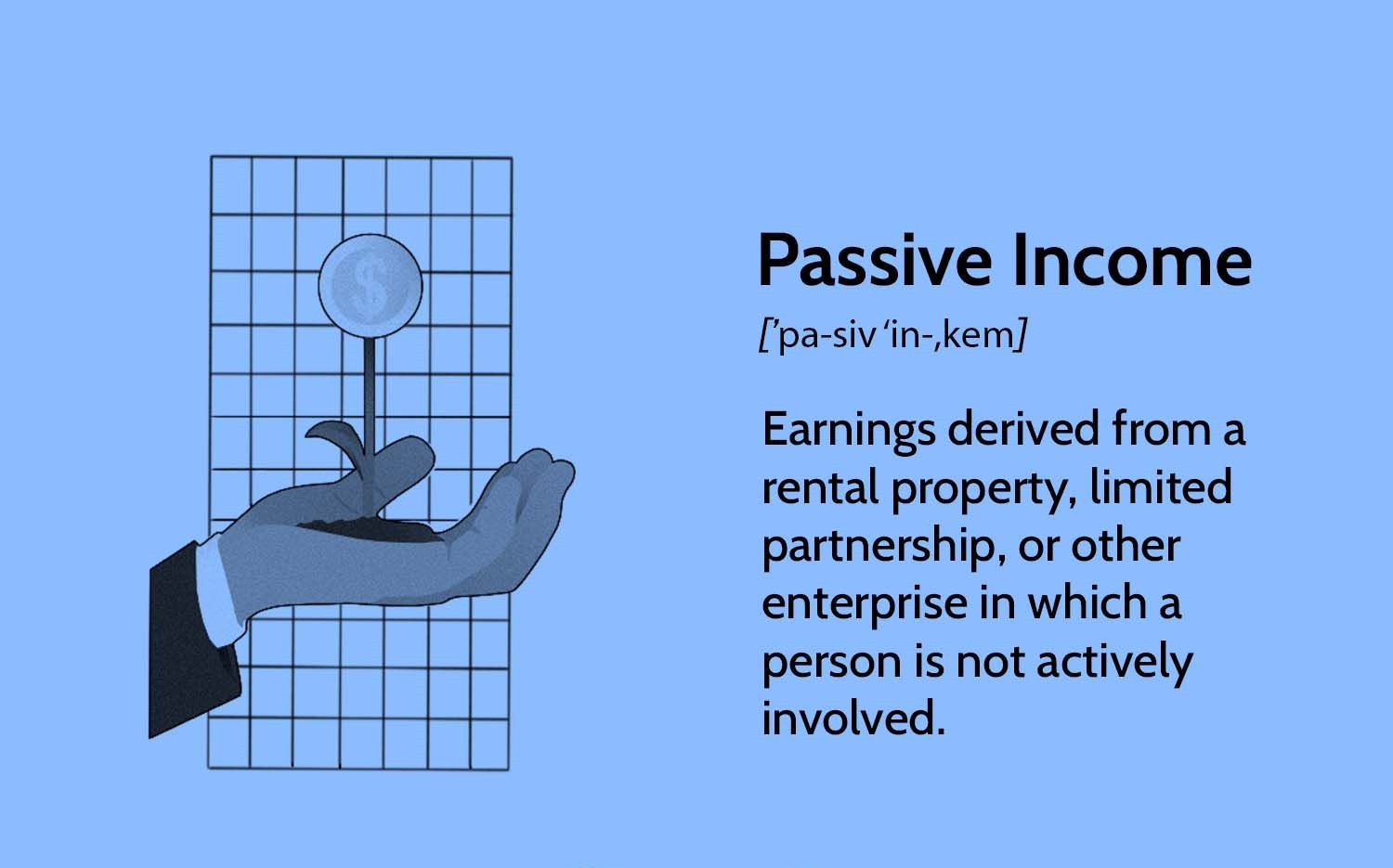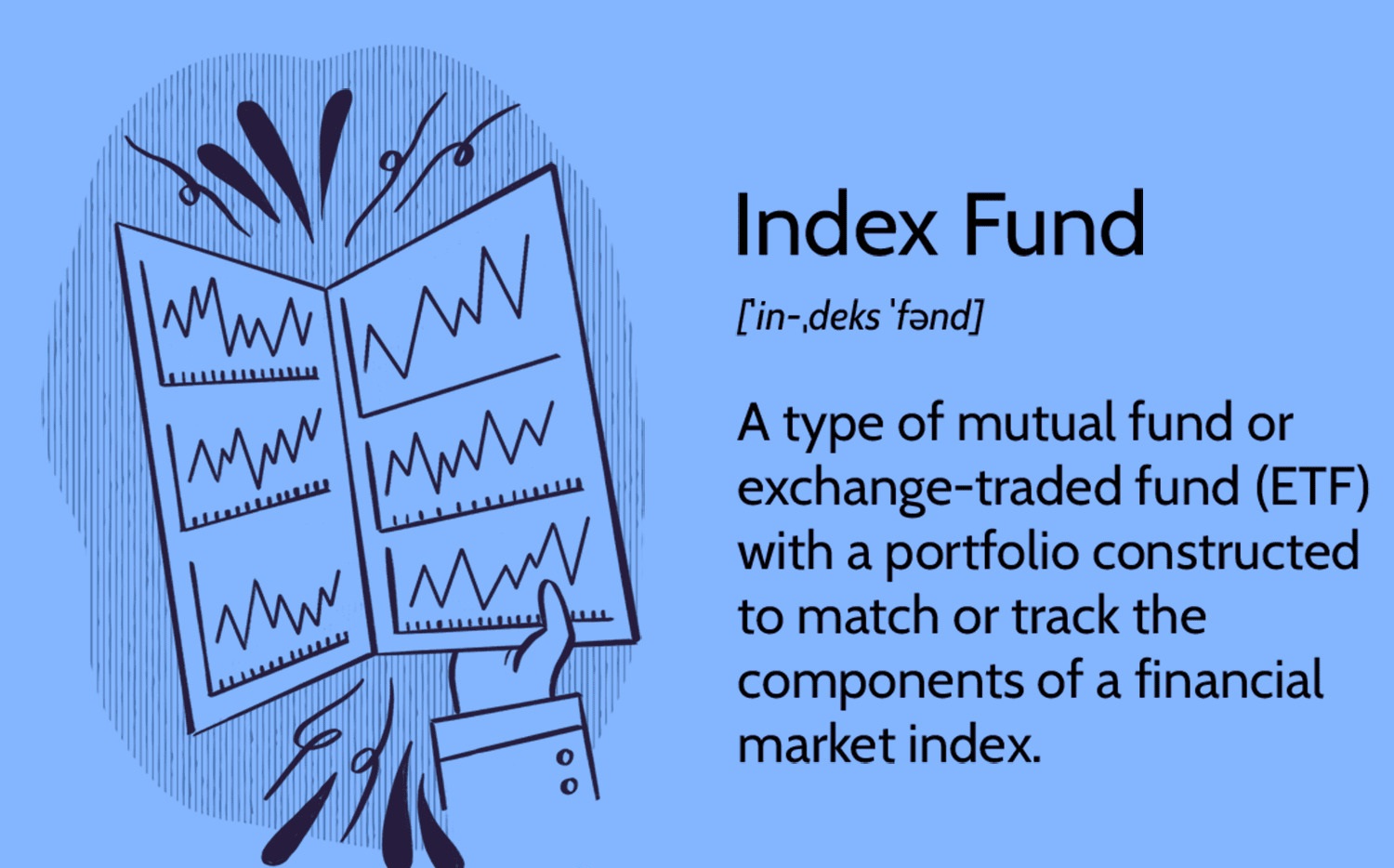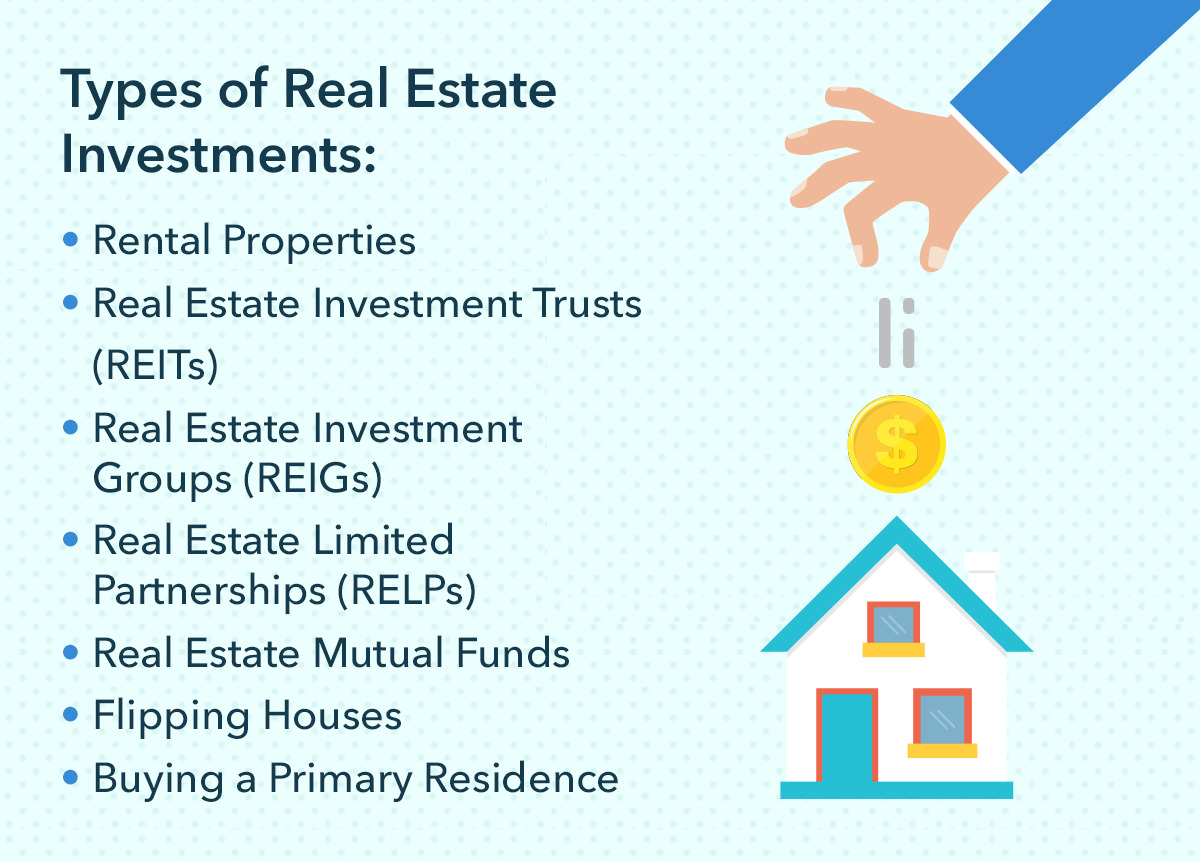Introduction
Welcome to the world of passive income and investments. If you’re tired of living paycheck to paycheck and looking for ways to generate additional income, investing can be a lucrative option. Passive income refers to the earnings you receive on a regular basis with minimal effort or active involvement on your part. It’s like having money work for you while you focus on other aspects of your life.
Investing is a popular method to generate passive income, and it presents an opportunity to build wealth over time. By allocating your money to various investment vehicles, you can create multiple streams of income that require little to no effort once set up. This means that even while you sleep, your investments can continue to earn more money for you.
In this article, we will explore the different types of investments you can consider to generate passive income. We will delve into the world of stocks, bonds, real estate, peer-to-peer lending, and dividend ETFs. Each investment option has its own advantages and considerations, so it’s crucial to understand them before deciding which route to take.
Furthermore, we will discuss how to develop a diversified investment portfolio to minimize risk and maximize returns. Diversification plays a vital role in protecting your investments and ensuring a stable income flow. We will also touch upon the various strategies you can implement to increase your passive income from investments.
Managing and monitoring your passive income investments is essential to stay on top of market trends and make informed decisions. While generating passive income can be highly rewarding, it’s not without its risks and challenges. We will explore the potential pitfalls and how to mitigate them, so you can navigate the investment landscape with confidence.
So, if you’re ready to embark on a journey towards financial freedom and discover how investments can generate passive income, let’s dive in!
Understanding Passive Income
Before we delve into the world of investments for passive income, it’s important to understand what passive income really means. Passive income refers to the earnings you receive on a regular basis with minimal effort or active involvement on your part. Unlike active income, which requires you to exchange your time and effort for money, passive income allows you to generate income while you focus on other aspects of your life.
Passive income can be seen as a way to break free from the traditional 9-to-5 grind. It offers the potential for financial freedom and flexibility, as it allows you to earn money outside of your regular job or business. With passive income, you have the opportunity to create multiple streams of income that work for you, rather than you working for it.
There are various sources of passive income, and investments are one of the most popular methods to generate it. By investing your money in different assets, you can earn passive income in the form of dividends, interest, or rental income. These earnings continue to flow in, even if you’re not actively working or managing the investments.
Passive income from investments can provide you with a stable and consistent income stream, which can be particularly beneficial during times of economic uncertainty or when you’re looking to achieve financial goals such as retirement or debt repayment. It can also offer you the opportunity to build wealth over time, as the returns generated from your investments can be reinvested or used to fund other ventures.
However, it’s important to note that passive income does not mean completely hands-off involvement. While the level of effort required may be minimal compared to active income, there is still some level of management and monitoring involved. It’s crucial to stay informed about market trends, evaluate your investment portfolio regularly, and make adjustments as needed to ensure your passive income continues to grow.
In the following sections, we will explore different types of investments that can generate passive income. Each investment option carries its own risks and considerations, so it’s important to thoroughly evaluate them before making any investment decisions. With a solid understanding of passive income and how it can be generated through investments, you’ll be well-equipped to create a path towards financial independence and a more secure future.
Types of Investments for Passive Income
When it comes to generating passive income, there are various investment options to consider. Each investment type offers its own potential for earning passive income, and it’s important to understand their characteristics and risks before making any investment decisions. Let’s explore some of the most common types of investments for passive income:
- Stocks: Investing in stocks involves buying shares of publicly traded companies. As a shareholder, you can earn passive income through dividends, which are a portion of the company’s profits distributed to shareholders. Additionally, stocks have the potential for capital appreciation, allowing you to grow your investment over time.
- Bonds: Bonds are debt instruments issued by governments, municipalities, or corporations. When you buy a bond, you’re essentially lending money to the issuer in exchange for periodic interest payments and the return of the principal amount at maturity. Bonds are considered relatively low-risk investments and can provide a stable source of passive income.
- Real Estate: Investing in real estate can be a highly lucrative way to generate passive income. Rental properties, commercial properties, and real estate investment trusts (REITs) can all provide opportunities for earning rental income or dividend income. Real estate investments can offer both cash flow and potential appreciation in property value.
- Peer-to-Peer Lending: This form of investment involves lending money to individuals or businesses through online platforms. As an investor, you earn passive income through the interest payments made by borrowers. Peer-to-peer lending can provide attractive returns, but it’s important to carefully assess the creditworthiness of borrowers and diversify your investments to mitigate risks.
- Dividend ETFs: Exchange-Traded Funds (ETFs) that focus on dividend-paying stocks can be an effective way to generate passive income while diversifying your investment portfolio. Dividend ETFs invest in a basket of dividend-paying stocks, allowing you to benefit from the dividend payments without the need to select individual stocks.
These are just a few examples of the types of investments that can generate passive income. Other options include certificates of deposit (CDs), annuities, royalties from intellectual property, and more. It’s essential to conduct thorough research and seek professional advice to determine which investment options align with your financial goals and risk tolerance.
In the next section, we will discuss how to create passive income streams with investments. We will explore strategies to diversify your investment portfolio and maximize your passive income potential.
Stocks
One of the most well-known investment options for generating passive income is stocks. When you invest in stocks, you become a partial owner of a company, and you have the potential to earn passive income through dividends and capital appreciation.
Dividends are periodic payments made by a company to its shareholders, typically out of its profits. These payments can provide a steady source of passive income, especially if you invest in dividend-paying stocks. Dividend stocks are shares of companies that have a track record of regularly distributing a portion of their earnings to shareholders.
Investing in dividend stocks allows you to benefit from the company’s success and receive a share of the profits. Dividends are usually paid quarterly, although some companies may pay them annually or semi-annually. The amount of dividend income you receive depends on the number of shares you own and the dividend yield of the stock.
Aside from dividends, stocks also have the potential for capital appreciation, which refers to an increase in the stock’s price over time. When you invest in stocks, you can make a profit by selling your shares at a higher price than what you paid for them. However, it’s essential to note that stock prices can fluctuate, and there is always the risk of losing money if you sell your shares when the price has decreased.
To invest in stocks, you can choose to buy individual company stocks or invest in exchange-traded funds (ETFs) or mutual funds that consist of a diversified portfolio of stocks. ETFs and mutual funds can provide further diversification, reducing the risk of relying on the performance of a single company.
While stocks offer the potential for passive income, it’s important to remember that investing in the stock market comes with risks. Stock prices can be volatile, and market fluctuations can impact the value of your investments. It’s crucial to do thorough research, evaluate the financial health of the companies you’re considering investing in, and diversify your stock portfolio across different industries and market sectors.
Furthermore, keeping an eye on market trends and staying informed about the companies you’re investing in is essential. Regularly reviewing your portfolio and making adjustments as needed is crucial to ensure your stocks continue to generate passive income for you.
Overall, stocks can be a powerful investment vehicle for generating passive income. By investing in dividend-paying stocks and considering capital appreciation opportunities, you can create a stream of income that continues to grow over time. However, it’s vital to approach stock investing with a long-term mindset, diversify your investments, and stay informed about market trends to mitigate risks and maximize your potential for passive income.
Bonds
Another investment option for generating passive income is bonds. Bonds are debt instruments issued by governments, municipalities, or corporations to raise capital. When you invest in bonds, you are essentially lending money to the issuer in exchange for regular interest payments and the return of the principal amount at maturity.
Bonds offer a fixed income stream, making them a popular choice for conservative investors seeking stable passive income. The interest payments, also known as coupon payments, are typically made semi-annually or annually, providing you with a predictable cash flow. The amount of interest you receive depends on the bond’s coupon rate and the principal amount invested.
One attractive feature of bonds is that they are usually considered less risky than stocks. Government and high-quality corporate bonds are generally considered safer investments as they have lower default risk. However, it’s important to note that lower-risk bonds often offer lower yields. On the other hand, high-yield or junk bonds offer higher yields but are associated with higher default risk.
In addition to the regular interest payments, bonds present an opportunity for capital appreciation if their market prices increase. Bond prices are influenced by various factors, including interest rate changes, credit ratings, and economic conditions. If you sell your bonds before they mature and their market prices have risen, you can make a profit on the price difference.
Diversification is crucial when investing in bonds. By spreading your bond investments across different issuers and types of bonds, you can reduce the risk associated with any single bond. This helps to protect your passive income stream and potentially increase your overall returns.
There are various types of bonds available, including government bonds, corporate bonds, municipal bonds, and treasury bonds. Government bonds are backed by the government, making them generally safer than corporate or municipal bonds. Municipal bonds are issued by local governments to fund public projects, while corporate bonds are issued by companies to raise capital.
Before investing in bonds, it’s essential to perform due diligence and assess the creditworthiness of the issuer. Credit rating agencies assign ratings to bonds based on their assessment of the issuer’s ability to repay the debt. Higher-rated bonds are considered less risky but may offer lower yields, while lower-rated bonds carry higher risk but potentially higher yields.
Overall, bonds can provide a reliable source of passive income, particularly for more risk-averse investors. They offer regular interest payments, and the potential for capital appreciation, depending on the movement of interest rates and the bond market. By diversifying your bond portfolio and selecting bonds that align with your risk tolerance, you can create a consistent income stream that grows over time.
Real Estate
Investing in real estate is a popular and potentially lucrative way to generate passive income. Real estate offers the opportunity to earn passive income through rental income or dividend income from real estate investment trusts (REITs).
Rental properties are one of the most common methods of earning passive income from real estate. By purchasing residential or commercial properties and renting them out to tenants, you can generate a consistent stream of rental income. The amount of rental income you receive depends on factors such as the location and condition of the property, market demand, and rental rates in the area.
Real estate investing provides unique advantages, such as the potential for long-term appreciation in property value. Over time, real estate properties tend to appreciate in value, allowing you to build wealth and increase your passive income potential. Additionally, rental income can provide a hedge against inflation, as rental prices tend to increase with inflation, allowing your income to keep pace with rising costs of living.
Another approach to investing in real estate for passive income is through real estate investment trusts (REITs). REITs are companies that own, operate, or finance income-generating real estate properties. When you invest in REITs, you become a shareholder and receive regular dividend payments from the rental income generated by the properties within the REIT’s portfolio. REITs provide an opportunity to invest in a diversified real estate portfolio without the need to directly own and manage properties.
Whether you choose to invest in physical rental properties or REITs, it’s crucial to carefully evaluate potential investments. Conduct thorough research on property values, rental demand, and market conditions in the areas you’re considering. Additionally, consider the costs associated with property maintenance, insurance, property management, and potential vacancies.
Investing in real estate also requires ongoing management and monitoring. As a landlord, you’ll have responsibilities such as finding and screening tenants, addressing maintenance issues, and ensuring legal compliance. If you choose to invest in REITs, it’s important to stay updated on the performance and financial health of the REIT, as well as any changes in the real estate market that may impact their returns.
Diversification is key when investing in real estate. By spreading your investments across different properties or REITs in diverse locations and property types, you can minimize risk and create a more stable and reliable passive income stream. Additionally, keep in mind that real estate investments tend to be long-term commitments, so having a long-term mindset and carefully analyzing potential returns are crucial.
In summary, real estate investing can be a viable avenue to generate passive income. Rental properties and REITs offer opportunities for rental income and potential property appreciation. However, it’s essential to conduct thorough research, manage your investments diligently, and diversify your real estate portfolio to mitigate risks and maximize your passive income potential.
Peer-to-Peer Lending
Peer-to-peer (P2P) lending has emerged as an alternative investment option for generating passive income. It involves lending money to individuals or businesses through online platforms, bypassing traditional financial institutions such as banks. P2P lending allows borrowers to access funds at potentially lower interest rates than what traditional lenders offer, while providing investors an opportunity to earn passive income through interest payments.
As an investor in P2P lending, you can choose to fund loans to a diverse range of borrowers, spreading your investment across multiple loans to mitigate risk. The interest rates you earn on your investments vary depending on the creditworthiness of the borrowers and the platform’s loan underwriting criteria. It’s important to carefully assess the risk associated with each borrower before making any lending decisions.
P2P lending platforms act as intermediaries, connecting lenders and borrowers. They conduct credit checks, provide loan listings, and facilitate the loan repayment process. By utilizing these platforms, investors can gain access to a pool of borrowers, diversify their lending portfolio, and potentially earn higher returns compared to traditional investment options.
One of the advantages of P2P lending is the ability to customize your investment strategy. You can choose the loan types, loan durations, and interest rates that suit your preferences and risk tolerance. However, it’s crucial to carefully assess the creditworthiness and financial stability of borrowers to minimize the risk of default and late payments.
While P2P lending offers the potential for attractive returns, it’s important to note that there are risks involved. There is a possibility of borrowers defaulting on their loans, which can impact your passive income stream. It’s vital to diversify your investments across multiple loans to minimize the impact of potential defaults on your overall portfolio.
Furthermore, P2P lending is not without additional considerations. It requires a level of active involvement in managing your investments, including assessing loan listings, monitoring repayments, and reinvesting funds received. Regularly evaluating the performance of your loans and making adjustments as needed is crucial to ensuring a steady flow of passive income.
Before investing in P2P lending, it’s important to understand the rules and regulations governing such investments in your jurisdiction. It’s also advisable to thoroughly research and choose reputable P2P lending platforms that prioritize borrower screening, loan transparency, and investor protection.
In summary, P2P lending can be a viable option for generating passive income through lending funds to borrowers. By leveraging online platforms, investors can diversify their lending portfolio and potentially earn attractive returns. However, it’s crucial to carefully evaluate borrowers, manage investments actively, and spread risk across multiple loans to mitigate potential defaults and maximize passive income potential.
Dividend ETFs
Dividend exchange-traded funds (ETFs) are investment vehicles that focus on dividend-paying stocks. ETFs are investment funds that trade on stock exchanges, and dividend ETFs specifically target companies that regularly distribute a portion of their profits to shareholders in the form of dividends.
Investing in dividend ETFs offers a convenient and diversified approach to generating passive income. These ETFs hold a portfolio of dividend-paying stocks from various companies and industries. By investing in a dividend ETF, you gain exposure to a basket of dividend stocks without the need to select individual stocks or manage a portfolio of different companies.
Dividend ETFs provide several benefits for passive income investors. Firstly, they offer a potentially steady stream of income through the dividend payments from the underlying stocks. The ETF collects the dividends from the companies and distributes them to its shareholders periodically, usually on a quarterly basis.
Secondly, dividend ETFs can provide diversification across different sectors and geographies, reducing the risk associated with investing in individual stocks. By investing in a dividend ETF that holds a diversified portfolio of stocks, you can mitigate the impact of poor performance from any single company and maintain a more stable income stream.
Dividend ETFs also give investors the opportunity for capital appreciation. While the primary focus is on dividend payments, the underlying stocks in the ETF can also experience price increases over time. This potential for both income and growth creates an attractive investment proposition for passive income seekers.
When considering dividend ETFs, it’s important to evaluate the fund’s dividend yield, which represents the dividend income generated by the ETF relative to its price. A higher dividend yield indicates a potentially higher income stream, but it’s important to assess the sustainability and stability of the dividends being paid by the underlying companies.
Additionally, it’s important to research and evaluate the track record and performance of the dividend ETF. Consider factors such as expense ratios, asset under management (AUM), and historical dividend growth. These factors can provide insights into the management of the ETF and the potential for sustainable and growing dividends.
Investing in dividend ETFs can be a passive and efficient way to generate income from a diversified portfolio of dividend-paying stocks. The income generated through these funds can provide a regular cash flow to investors, which can be particularly useful for those seeking a reliable source of passive income.
However, it’s important to note that like any investment, there are risks involved. Dividend ETFs can be affected by market fluctuations, changes in interest rates, and the overall performance of the stock market. It’s essential to assess your risk tolerance, perform thorough research, and consider consulting with a financial advisor before investing in dividend ETFs or any other investment vehicle.
In summary, dividend ETFs offer a convenient and diversified approach to generating passive income through dividend-paying stocks. By investing in these ETFs, investors can benefit from regular dividend payments, potential capital appreciation, and the advantages of diversification. It’s important to choose reputable dividend ETFs, assess the underlying companies’ financial health, and regularly monitor your investments to maximize returns and mitigate risks.
Creating Passive Income Streams with Investments
Investing is not only a means to grow your wealth but also a powerful tool for creating passive income streams. By strategically allocating your money into different investment vehicles, you can generate multiple sources of passive income that require minimal effort or active involvement. Here are some key strategies to consider:
Diversify Your Investment Portfolio: Building a diversified investment portfolio is essential for spreading risk and ensuring a stable income stream. By investing in a mix of asset classes such as stocks, bonds, real estate, and other investment options, you can reduce the impact of any individual investment’s performance. Diversification helps protect your passive income stream from market fluctuations and potential losses.
Focus on Income-Generating Investments: To generate passive income, prioritize investments that have a history of producing regular income. Dividend-paying stocks, high-yield bonds, rental properties, or income-focused funds like dividend ETFs can be valuable additions to your portfolio. These investments offer the potential for consistent cash flow, helping to sustain your passive income over time.
Reinvest Your Earnings: To enhance your passive income streams, consider reinvesting the earnings you receive from your investments. By reinvesting dividends, interest, or rental income, you can compound your returns and accelerate the growth of your passive income. Reinvesting involves using the income generated by your investments to purchase additional shares, bonds, or properties, further expanding your income-generating potential.
Consider a Systematic Investment Approach: Implementing a systematic investment approach, such as dollar-cost averaging, can be effective for creating passive income streams. This strategy involves investing a fixed amount of money at regular intervals, regardless of the market conditions. By doing so, you can take advantage of market fluctuations and potentially buy more shares when prices are lower, ultimately maximizing your potential for long-term passive income.
Automate Your Investments: Automating your investment contributions can streamline the process of generating passive income. Set up automatic transfers from your bank account to your investment accounts on a regular basis. By automating your investments, you ensure a consistent flow of funds into your income-generating assets without the need for constant manual intervention.
Monitor and Review Your Investments: While passive income requires minimal effort, it’s essential to regularly monitor and review your investments. Stay informed about market trends, keep track of the performance of your investments, and make adjustments as necessary. Regularly evaluating your investments ensures that your passive income streams remain optimized and aligned with your financial goals.
Creating passive income streams through investments requires careful planning, diversification, and ongoing management. It’s important to strike a balance between risk and reward and tailor your investment strategy to your financial circumstances and goals. With a well-structured investment approach, you can build a solid foundation for generating passive income and working towards financial independence.
Developing a Diversified Investment Portfolio
Developing a diversified investment portfolio is crucial for long-term success and reducing risk. A diversified portfolio is one that combines different types of investments across various asset classes, sectors, and geographic regions. By spreading your investments across multiple areas, you can minimize the impact of any individual investment’s performance and create a more stable income stream. Here are some key considerations for developing a diversified investment portfolio:
Asset Allocation: Determining the allocation of your investments across different asset classes is the foundation of portfolio diversification. Common asset classes include stocks, bonds, real estate, commodities, and cash. Each asset class has its own risk and return characteristics, so it’s important to allocate your investments based on your risk tolerance, financial goals, and time horizon.
Stocks: Stocks are a popular asset class for potential long-term growth and passive income. Consider diversifying your stock investments by investing in different industries, market sizes, and geographic regions. This helps spread risk and ensures your portfolio is not overly dependent on the performance of any single stock or sector.
Bonds: Bonds provide income and stability to a portfolio. They are typically less volatile than stocks and can act as a buffer during economic downturns. Diversify your bond investments by considering different types like government bonds, corporate bonds, municipal bonds, and bonds with varying maturities and credit ratings.
Real Estate: Real estate investments can provide diversification and income potential. Consider investing in residential or commercial properties in different locations to spread your risk. Additionally, allocating a portion of your real estate investments to REITs can offer further diversification without the need to directly own and manage properties.
Other Asset Classes: Consider diversifying further by exploring other asset classes such as commodities, precious metals, or alternative investments like private equity or venture capital. These asset classes can provide additional income potential and diversification benefits, although they may carry higher risk and require careful evaluation.
Geographic Diversification: Spread your investments across different regions and countries to reduce the impact of localized market events. Consider investing in both domestic and international markets to take advantage of global economic growth opportunities. However, keep in mind that international investments may introduce currency risk and regulatory considerations, so thorough research is necessary.
Rebalancing and Monitoring: Regularly review and rebalance your portfolio to maintain your desired asset allocation. Over time, the value of your investments will fluctuate, potentially skewing your original allocation. Rebalancing involves selling overperforming assets and buying underperforming ones to restore your desired mix. Monitor your portfolio’s performance regularly and make adjustments as needed to ensure it aligns with your financial goals.
Remember that diversification does not guarantee profits or protect against losses. It is important to strike a balance between risk and potential return based on your individual circumstances and goals. Consider consulting with a financial advisor who can help you design a well-diversified investment portfolio aligned with your financial objectives.
By developing a diversified investment portfolio, you can reduce the impact of market volatility and position yourself for long-term growth and passive income generation. A well-balanced portfolio provides stability, mitigates risk, and increases the likelihood of achieving your financial goals.
Selecting the Right Investment Strategy for Passive Income
Choosing the right investment strategy is essential for generating passive income and achieving your financial goals. The best strategy for passive income will depend on factors such as your risk tolerance, investment timeline, financial objectives, and personal preferences. Here are some key considerations to help you select the right investment strategy:
Risk Tolerance: Assessing your risk tolerance is a crucial first step in choosing an investment strategy. Understand your comfort level with fluctuations in the value of your investments and the potential for temporary declines. Generally, higher-risk investments offer the potential for higher returns but come with greater volatility. On the other hand, lower-risk investments may provide more stability but lower potential returns. Consider your risk tolerance carefully and select an investment strategy aligned with your comfort level.
Investment Timeline: Consider your investment timeline or the period over which you plan to generate passive income. If you have a longer time horizon, you may be able to pursue strategies that involve more growth-oriented investments, as you have more time to ride out short-term market fluctuations. Alternatively, if your intention is to generate passive income in the near term, focusing on income-generating investments such as dividend stocks or rental properties may be more suitable.
Financial Objectives: Clearly define your financial objectives for generating passive income. Are you seeking to supplement your current income, save for retirement, or achieve financial independence? Understanding your objectives will help you identify the most appropriate investment strategy that aligns with your goals. For example, if your primary goal is to earn consistent income, investment options such as dividend stocks, bonds, or rental properties may be prioritized.
Balance Income and Growth: Consider how you want to balance income and growth in your investment strategy. Some investment options, such as dividend stocks, prioritize regular income in the form of dividends, while others, like growth stocks, prioritize capital appreciation. Finding the right balance can be influenced by your financial objectives and risk tolerance. Combining income-focused investments with growth-oriented ones allows you to potentially benefit from both income and long-term growth.
Diversification: Diversification is critical regardless of the investment strategy you select. Spreading your investments across different asset classes, sectors, and geographic regions helps mitigate risk and creates a more stable and reliable income stream. Consider diversifying your portfolio to include a mix of stocks, bonds, real estate, and other assets that align with your chosen investment strategy.
Tax Considerations: Understand the potential tax implications of your investment strategy. Different investments are subject to varying tax rules and rates. For example, income generated from rental properties may be subject to rental income tax, while dividend income from stocks may be taxed at a different rate. Consult with a tax professional to identify tax-efficient investment strategies and minimize your tax obligations.
Ultimately, the right investment strategy for passive income will be unique to your individual circumstances and financial goals. It’s important to carefully assess your risk tolerance, investment timeline, financial objectives, and other considerations. Consider consulting with a financial advisor who can provide personalized guidance and help you select an investment strategy that aligns with your needs and objectives.
Keep in mind that investing involves risks, and no strategy can guarantee success or eliminate the possibility of losses. Research, diversify, and regularly review your investments to ensure they continue to meet your passive income goals and align with any changes in your financial situation.
Strategies to Maximize Passive Income from Investments
Maximizing passive income from investments requires a strategic approach and careful consideration of various factors. By implementing the right strategies, you can optimize your investment portfolio and generate higher levels of passive income. Here are some key strategies to help you maximize your passive income:
Select High-Yield Investments: Focus on investments that offer higher yields or returns. Dividend stocks with a history of consistent and growing dividend payments, high-yield bonds, or real estate properties with attractive rental income potential can all contribute to maximizing your passive income. Evaluate investment options based on their income-generating potential and consider those that align with your risk tolerance and financial objectives.
Reinvest Dividends and Income: Consider reinvesting dividends, interest, or rental income back into your investment portfolio. Reinvesting these earnings enables compound growth, as your investment balances increase, leading to higher potential future income. By reinvesting, you can accelerate the growth of your passive income and benefit from the power of compounding over time.
Focus on Growth-Centric Investments: While income-generating investments are important for passive income, don’t overlook the potential of growth-centric investments. Stocks or funds that have the potential for capital appreciation can significantly boost your overall returns. Striking the right balance between income and growth investments can provide a balanced and dynamic approach to maximizing your passive income.
Regularly Review and Rebalance: Regularly review your investment portfolio and rebalance it as necessary. Rebalancing involves adjusting the allocation of your investments based on their performance and your desired asset allocation. This ensures that your portfolio stays aligned with your passive income goals and allows you to capitalize on potential opportunities in different market conditions.
Employ Tax-Efficient Strategies: Minimize the impact of taxes on your passive income by employing tax-efficient investment strategies. Consider investing in tax-advantaged accounts such as Individual Retirement Accounts (IRAs) or 401(k)s that offer tax advantages. Additionally, be mindful of the timing of your capital gains or losses, as well as any available tax deductions or credits related to your investments.
Automate Your Investments: Automating your investment contributions can help ensure consistent and disciplined investing. Set up automatic deposits or contributions from your income into your investment accounts. Automating your investments not only encourages regular saving but also takes advantage of the power of dollar-cost averaging, especially during periods of market volatility.
Continuously Educate Yourself: Stay informed and continuously educate yourself about investment strategies and market trends. Keep up with financial news, read books and articles, and consider attending investment seminars or webinars. The more knowledge and understanding you have, the better equipped you’ll be to make informed investment decisions and maximize your passive income.
Seek Professional Advice: Consider working with a financial advisor or investment professional who specializes in passive income strategies. They can provide personalized guidance based on your individual circumstances and goals. A professional can help you analyze risk, select appropriate investments, and create a customized plan to maximize your passive income effectively.
Remember that maximizing passive income from investments requires patience and a long-term perspective. It’s important to align your investment strategies with your financial goals, risk tolerance, and time horizon. Regularly evaluate your investment portfolio, stay disciplined, and make adjustments as necessary to optimize your passive income potential.
Managing and Monitoring Your Passive Income Investments
Successfully generating passive income from investments requires active management and ongoing monitoring. While the term “passive income” implies minimal effort, it’s important to stay engaged and informed to ensure the effectiveness and stability of your income streams. Here are some key strategies for managing and monitoring your passive income investments:
Regular Review: Set aside regular intervals to review the performance of your investments. This allows you to assess if your portfolio is generating the expected income and if any adjustments need to be made. Regular reviews help you stay informed of changes in market conditions and make informed decisions about potential modifications to your investment strategy.
Stay Informed: Keep up to date with financial news and stay informed about the sectors or industries related to your investments. Monitor market trends and economic indicators that may impact the performance of your investments. This information can help you make proactive decisions and potentially capitalize on opportunities or adjust your portfolio for potential risks.
Monitor Dividend Payments: If your passive income investments include dividend-paying stocks, closely monitor the dividend payments from these companies. Stay aware of any announcements or changes in dividend policies that could impact your income. Additionally, keep an eye on the financial health and performance of the companies you’ve invested in to ensure they continue to deliver consistent dividends over time.
Track Rental Income: If you own rental properties, diligently track the rental income received and manage any associated expenses. Regularly assess rental rates in your area to ensure you’re charging competitive rates. Stay proactive in addressing maintenance issues and finding quality tenants to maintain a reliable and consistent rental income stream.
Reinvest or Diversify: As your passive income grows, consider reinvesting the earned income to further expand your investment portfolio. Reinvesting can enhance the compounding effect and accelerate your passive income growth. Alternatively, you may choose to diversify your investments or explore new opportunities to minimize risk and maximize income potential.
Review Tax Implications: Understand the tax implications of your passive income investments. Consult with a tax professional to optimize your tax strategy and maximize your after-tax income. Take advantage of any relevant tax deductions, allowances, or tax-efficient investment vehicles to ensure you’re managing your investments in a tax-efficient manner.
Adapt to Changing Needs and Goals: Continuously assess your financial needs and goals and adjust your investment plan accordingly. As your circumstances change, you may need to reevaluate your passive income strategies. For example, during retirement, you may shift your focus towards investments that prioritize stable income streams over growth, ensuring your passive income aligns with your desired lifestyle.
Utilize Technology: Leverage technological tools and online platforms to streamline your investment management. Use investment tracking software or mobile apps to monitor your portfolio’s performance, receive alerts, and calculate income generated from your investments. Automated systems can help simplify the monitoring process and provide you with real-time information.
Consult with Professionals: Consider engaging a financial advisor or investment professional who specializes in passive income strategies. They can provide expert guidance, conduct performance analysis, and make recommendations based on your goals and risk tolerance. A professional can help you navigate the complexities of managing passive income investments and provide peace of mind.
Remember, managing and monitoring your passive income investments is an ongoing process. Stay actively engaged, adapt to changes in market conditions or personal circumstances, and regularly assess your investments to maintain and maximize your passive income streams.
Risks and Challenges of Generating Passive Income from Investments
While generating passive income from investments can be rewarding, it’s important to be aware of the potential risks and challenges involved. Understanding these risks can help you make informed decisions and implement strategies to mitigate them. Here are some common risks and challenges associated with generating passive income from investments:
Market Volatility: Investments are subject to market fluctuations, which can impact the value of your portfolio and the income generated. Stock prices, bond yields, and real estate values can all be influenced by economic conditions, geopolitical events, and investor sentiment. Market volatility can lead to decreased income or fluctuations in dividends, rental income, or interest payments.
Default Risk: Investments that involve lending money, such as bonds or peer-to-peer lending, carry the risk of borrower default. If the borrower fails to repay the loan, it can result in a loss of income or capital. It’s important to assess the creditworthiness of borrowers and diversify your investments to mitigate the risk of defaults.
Interest Rate Risk: Interest rate fluctuations can impact the income generated from fixed-income investments like bonds. When interest rates rise, bond prices tend to fall, potentially affecting the value of your investment. It’s important to understand the relationship between interest rates and bond prices and consider the potential impact on your passive income stream.
Inflation Risk: Inflation erodes the purchasing power of your income over time. If the income from your investments does not keep pace with inflation, the real value of your passive income may decrease. It’s important to consider investments that have the potential to provide income that outpaces inflation to preserve your purchasing power.
Property Management Challenges: Owning and managing rental properties can come with its own set of challenges. Property maintenance, tenant management, and dealing with vacancies can require time, effort, and expertise. It’s important to factor in these challenges when considering real estate as a passive income-generating investment.
Tax Considerations: The income generated from your investments may be subject to taxation. Tax laws can vary depending on your jurisdiction and the type of investment. It’s important to understand the tax implications and consider tax-efficient strategies to maximize your after-tax income. Consult with a tax professional to ensure compliance with tax regulations and optimize your tax strategy.
Liquidity Risk: Some investments may have limited liquidity, meaning it can be difficult to convert them into cash quickly. Real estate properties, private equity investments, or certain types of bonds may have restrictions on selling or require a longer time frame to liquidate. It’s important to consider the liquidity of your investments and ensure you have enough cash flow to meet your financial obligations.
Regulatory and Legislative Changes: Regulatory and legislative changes can impact investments and their income potential. Changes in tax laws, regulations governing certain industries, or government policies can affect the profitability of investments. Staying informed about potential changes and adapting your investment strategy accordingly is crucial.
It’s important to note that all investments carry some degree of risk. Proper diversification, diligent research, and ongoing monitoring are essential to manage these risks effectively. Consider consulting with a financial advisor or investment professional who can help you navigate the challenges and develop a risk-mitigation strategy tailored to your specific situation.
By understanding and managing these risks, along with a proactive and disciplined approach, you can strive to build a resilient portfolio that generates consistent and reliable passive income over the long term.
Conclusion
Generating passive income from investments is an attractive way to secure financial freedom and build wealth over time. By carefully selecting the right investment options, diversifying your portfolio, and implementing effective strategies, you can create multiple streams of income that require minimal effort or active involvement. It’s important to be aware of the risks and challenges associated with passive income investments and take appropriate measures to mitigate them.
Understanding the different types of investments available, such as stocks, bonds, real estate, peer-to-peer lending, and dividend ETFs, allows you to select the options that align with your goals and risk tolerance. Developing a diversified investment portfolio helps spread risk and enhances the stability of your income streams. Reinvesting earnings, staying informed, and regularly reviewing and rebalancing your portfolio are key to maximizing your passive income potential.
Managing and monitoring your passive income investments ensures that you stay informed about market trends, adjust your strategy as needed, and make informed decisions for long-term success. It’s crucial to consider tax implications, adapt to changing needs and goals, and leverage technological tools to streamline the investment management process.
While the path to generating passive income may have its challenges, with proper knowledge, careful planning, and disciplined execution, you can create a reliable and growing stream of passive income. It’s important to consult with financial advisors or investment professionals to align your investment strategy with your goals and ensure you have a well-rounded approach to generating passive income.
Remember, investing involves risks, and no investment strategy can guarantee profits or protect against losses. It’s essential to conduct thorough research, regularly monitor your investments, and make informed decisions based on your specific circumstances and risk tolerance.
By implementing the strategies and considerations outlined in this article, you can embark on a journey towards financial independence, achieving your passive income goals, and securing a more prosperous future.

























